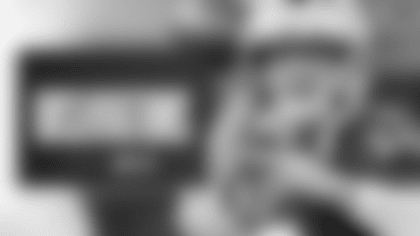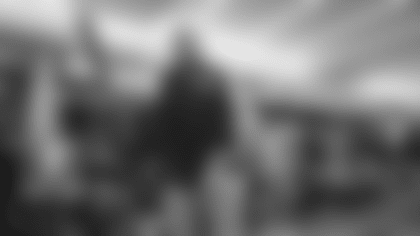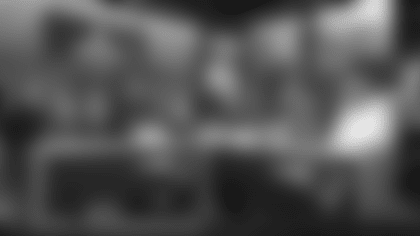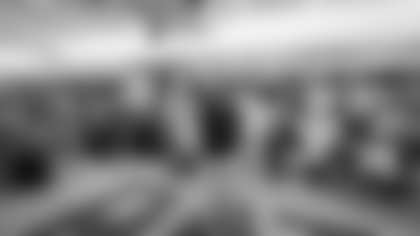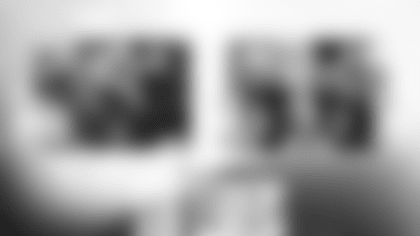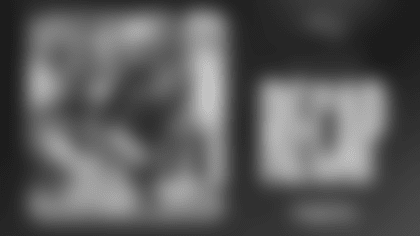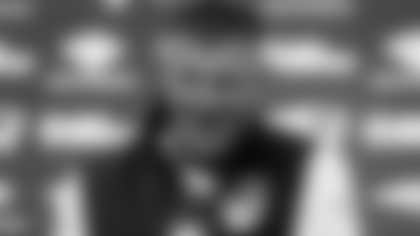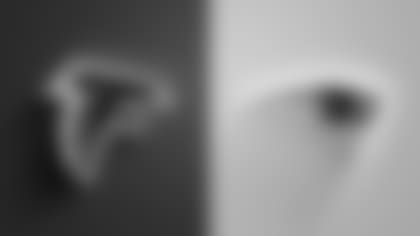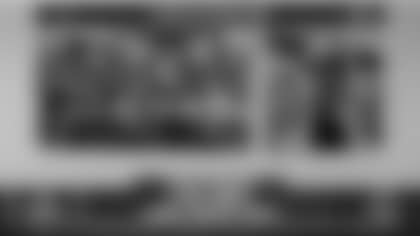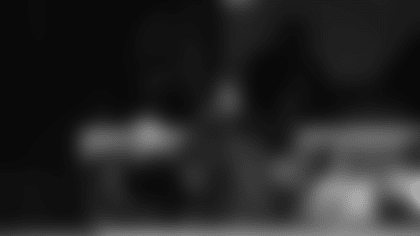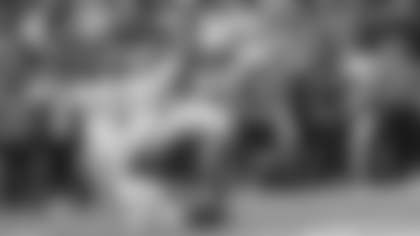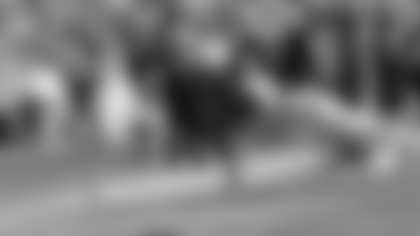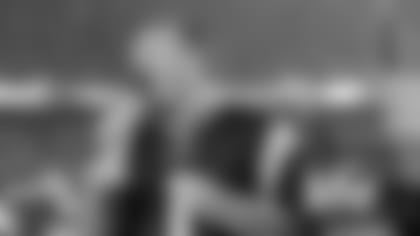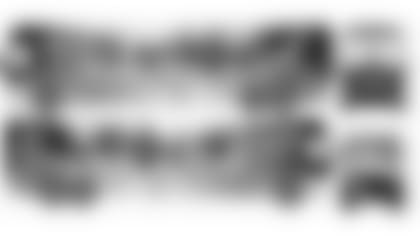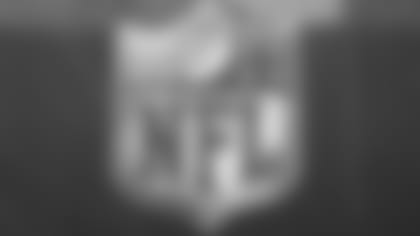New England Patriots offensive coordinator Josh McDaniels addresses the media durin his conference call on Tuesday, November 4, 2008.
Q: It seemed like Matt Cassel did a lot of good things on Sunday night, what would be the one thing that he did really well?
JM: He really had a good sense of timing as far as the pass rush was concerned. That was something that we've been working hard on in terms of trying to feel the right time to either leave the pocket or stay in the pocket. He did a nice job of stepping up a few times, waiting for the route to unfold or develop. [He] didn't leave the pocket unnecessarily and then he made some plays where he did scramble out of the pocket where it was necessary to do so. I think that's improving every week and it's something that showed up Sunday night.
Q: When Matt [Cassel] becomes better at that [timing] as he has how much does it help him with the other parts of the game?
JM: When you start to get a strong feel for, a sense of timing and the feel for the rush it gives you that added extra second to keep your eyes down the field and see the coverage. People that may be coming open a little later in your progression you have an opportunity to use that full progression and go to the second or third read when you're standing in there comfortably in the pocket. Over the last two or three weeks it's really started to pay some dividends for him. He hit a number of second or third reads a couple weeks ago and that carried over into this game. I think it opens up more of the offense and allows him to move past the first or second read if they happen to be covered and get the ball into someone's hands that is open that you may not start with on a particular play. Because you keep the play alive and have good poise in the pocket you get to get them the ball.
Q: Is there an example of that from this last game where he did that? Is there one that stood out to you?
JM: Yes there was a third down play where he ended up coming to [Jabar] Gaffney on a comeback. It wasn't the first read, there was a little bit of pressure from our right side and he did a nice job of hanging in there. He just stepped subtly to his left, didn't leave the pocket, didn't pull the ball down to run, kept the play alive and allowed Jabar to run his route at the right depth. Jabar made a good move at the top of the route, got open and [Matt Cassel] threw a nice ball on the comeback and we converted a third down. That was just one example. I thought it was an important play and it was a play that again, he's improved and now is capable of making.
Q: The ball over the middle to [Wes] Welker, on I think it was third and 11 that nearly hit the ref but hit him in stride, was that his first read on that play?
JM: The one in the red zone where it ended up fourth and one?
Q: Yes.
JM: It depends on the coverage on plays like that. Sometimes when they drop off and play very soft as they did on that particular play we try to get it to somebody that has an opportunity to catch and run and try to get the first down with their legs instead of always trying to throw it behind them. They were playing a little softer on that one and he came to Wes [Welker] quick. That referee is always an issue on some of those underneath type routes because of where he is standing. There have been plays in the past where we've hit him. There have been plays in the past were the receiver crosses behind him and loses sight of the ball. It just so happens that the official got down in time and Wes made a nice catch. It takes a lot of concentration to do that because that guy is always going to be standing somewhere in that vicinity. Wes kept his eye on the ball and it was a good throw and catch.
Q: Can you take us back to how the [direct snap] plays to Kevin Faulk were born? Was that something you did this week or is that something you've had in for a while?
JM: Whenever you go into a game you want to try to take a variety of different runs into a game plan, which we normally do, and we ran plenty of draws the other night, we ran plenty of schemes that were very similar. That was just a way for us to run a similar play against a defense that we felt those plays were good against. It really wasn't something that we've really been working on for a long time. It was just something that we felt gave us an added element to the game plan - another thing for them to defend and we'll see where it goes. There's no telling if we'll use it again or not. We may or we may not, it depends on how we feel about it.
Q: Certainly Miami has been doing a lot of it with Ronnie Brown and we saw [Joe] Flacco catch a pass a couple of weeks ago - why do you think teams are doing that kind of thing? Splitting their quarterbacks out wide and letting somebody else handle the ball.
JM: In terms of your preparation, and I would speak offensively from our point of view, whenever a defense does something that's a little bit different you have to make a decision and a choice on how much time to spend on that. It may not be something that they've done very much of but you still have to make a decision and a choice of how much practice time and how much preparation time you need to spend on that element of their game during the course of the week. Obviously Miami is running a lot of it, or at least a significant portion of it, and some of these other teams that are filtering it through now - defenses are going to have to decide, 'How much time do we put towards this? Are we going to check if they get in it? Are we going to run all of our calls? Are we going to get out of calls and into something different? How are we going to defend that if they happen to use it against us?' I think it's something that people are doing and if they don't have any success I'm sure you're not going to see much of it again, which is probably why you've seen it more and more from Miami because they seem to be successful with it. You run it and you make the other team worry about it during the course of the week and that's part of coaching and preparation. It's a pain in the butt sometimes when people do things a very few number of times but you still have to prepare and spend practice reps on them and that's time that you're not spending on something they may do a lot more of. There are two sides to the coin and if you can get it to work for you it's great and if not at least the other team has to defend it.
Q: Has Matt [Cassel] been lobbying to catch some balls?
JM: Not really. I think he's a lot more comfortable under center and in shotgun throwing the ball then he is catching it. I think Tom [Brady] may have only caught one ball in his career. We're not in a hurry to throw those guys the ball we'd prefer them throwing it.
Q: When you look at the red zone what's the common thread to you, other than simply making the plays, is there one aspect that could have improved those numbers in your mind?
JM: On two of those trips we had a zero-yard run and a negative pass. Anytime you get into a third down and long scenario in the red zone you're already short field to work with because you don't have a lot of field behind [the defense]. When you get into a situation, as we already talked about third and 11 down at the 18 or 19-yard line it's tough to run a lot of patterns past the sticks unless you're going to throw it to the back of the end zone, which we all know those plays are lower percentage anyway. I think in our minds if we stay ahead on the down and distance, if we get positive plays and get into third and short down in the red zone then you have a greater chance to succeed on third down. On two of those trips, unfortunately we fell into third and more then 10. You only convert third and 10 plus in an entire season maybe eight or 10 times a year and to try and convert them in the red zone it makes it even more difficult. We just have to do a really good job of trying to do what we did the rest of the game, which is avoid negative plays, no penalties, no negative runs and try to stay ahead on down and distance. I think we'll see some better numbers down in the red zone, which obviously we are going to strive towards.
Q: On the fourth and one where you were going to go for it then Bill [Belichick] called timeout and went for the field goal, what was the dialogue like on sideline there and why the switch?
JM: We sent the play in originally and down there at the end of the field it's always a little bit more difficult to tell exactly how much you need. If they don't measure and you don't really get an indication from the official of how much you actually need for the first down it's kind of a harder angle from the press box and from the sideline, unless we run all the way down there, it's difficult to tell there too. We sent the play in and originally we were thinking it was much less than a yard and we were ready to go with the best play we felt we had. After we broke the huddle and the ball was spotted we got a better look at it and Bill ran down there and decided to call a timeout just to take some more time to make a smart decision. The best decision we could make at the time, obviously it was a crucial play. After it was decided that it was at least a yard or at least close to it we felt better about kicking a field goal and trying to play defense and then get the ball back and try to have success on offense when we got it back. Which we'd done most of the game and we were doing the next time we got it until we ran into the penalty situation and got into a third and long. Hindsight's always 20/20. Would we have got it? I don't know. We made a choice, we tied the game up and we definitely had a good enough chance to win it after that. It was a decision you make and you move on.
Q: When can you ask for measurements?
JM: You can request a measurement and usually they grant it. I'm not sure of the exact ruling or how close it needs to be or what have you. As long as it's within reason I believe they'll give you a measurement in that situation. At that time Bill went down there and saw it for himself. Once the ball was spotted and the pile was cleared we already had our personnel out there on the field and we also got a little bit better look at it from the press box. You can request it but I'm not exactly sure how close it needs to be in order for them to grant it.
Q: On those kinds of plays you've often run the QB sneak and Tom [Brady] was fantastic at those. What is it about a quarterback, what skills do you have to have to squeeze out that yard and a half or whatever it takes on fourth and short?
JM: I think really and truly, and Tom as you mentioned was really successful at it and Matt's had some success this year doing it as well, I think you have to have a really good feel for where to go because you don't have long to make a decision. We kind of know where we want to go and once the ball is snapped you have to kind of burrow yourself in there and you can't go down to the ground you have to push that soft spot wherever it may be. Whether it's to the right of the center or the left of the center and really try to push in there and keep your legs moving and driving. We've got tall guys at quarterback that have long legs and they've got to continue to do that. Tom [Brady] was very good at it and Matt's [Cassel] getting better every week when we use it. He's doing a good job of finding that soft spot and making the yard or yard and a half that he needs to get the first down. I think it's more of a feel thing, once you know which direction you're heading in you have to try to stay upright and really get in there behind the center and the guard and try to push out a yard.
Q: In your opinion as the play caller why wasn't the ball going down the field more in that game?
JM: The first thing you have to understand or take into consideration when you're trying to get the ball down the field against any team is how much time you need to throw it. The Colts obviously have a significant pass rush, very good pass rushers and so you have to make a determination whether that's a big part of your game plan or not. The way that they played - they're a zone team, they've got a lot of defensive backs and linebackers looking at the quarterback on most snaps. They are very rarely in man coverage so when you have a lot of people back deep trying to make you throw it in front of them and they're looking at the quarterback trying to read where the ball is going to be thrown and then they're all trying to get to the ball at the same time that's sometimes a little bit more difficult. They were rolling the coverage to Randy [Moss] most of the night - putting a corner up near him, putting a safety up high behind him and in past years against the Colts, again you have to really pick your spots. Last year we hit one on them to Randy in the game in '07 but had two others that we were trying to force down the field picked off. In '06 it was very similar we tried to throw the ball down the field a few times and didn't have very good success doing it either. It's a combination of the pass rush, how much time you need to hold it to throw the ball down there, what they're playing to try to take a certain player away and how much success you think you're going to have throwing it when there are people that are always significantly in the deep part of the field. We had a shot later in the game where we put Randy in the slot and the safety happened to over play inside and had a chance to hit [Jabar] Gaffney up the sideline and it just didn't work out. Every game is different. You have to gauge how much time you have to protect, what openings they give you based on the coverages they play and how smart it is to take those risks and those chances in the type of game that it may be.


